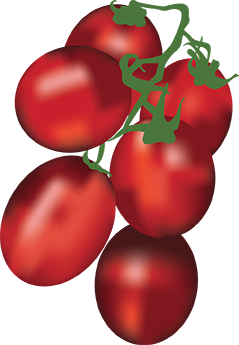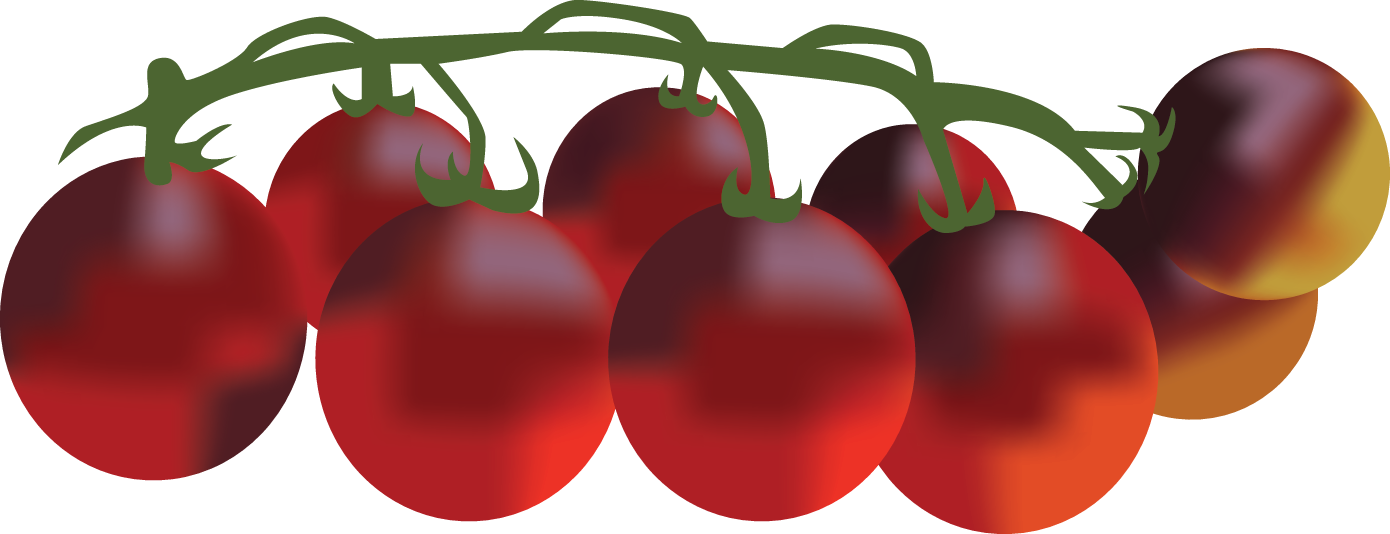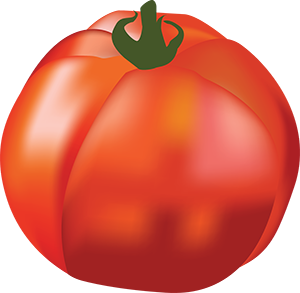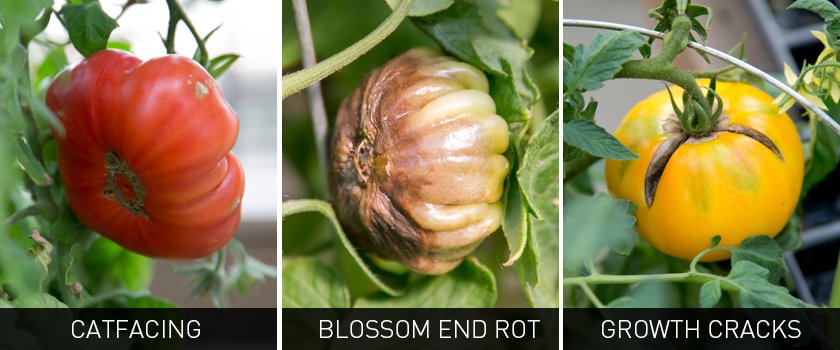The gardening season is just around the corner and if you haven't done your homework yet, we're here to help with another tomato cheat sheet. If you missed our previous guides, be sure to go back and read part one and part two for more scrumptious varieties, demystifying the lingo, and planting tips.
Although our list is in alphabetical order, today's guide ended up with a theme of health and rainbows! Yes, tomatoes are healthy but did you know that some are healthier than others? If you want to grow the best food for health and longevity, that also boast the most vibrant garden colours, read on!

Health Kick
Matures: 75 days
Fruit Size: 4 oz.
Plant Type: Determinate
Genetic Type: Hybrid
The Health Kick tomato could have an entire article dedicated to it's awesomeness! If you're going to plant anything for your health, put this tomato on the list. The health kick is loaded with 50% more lycopene which is one of the most powerful antioxidants in the world. Including lycopene to your diet can fight toxins, aid in cancer prevention, keep your eyes healthy, relieve neuropathic pain, protect your brain, improve heart health, and keep your bones strong. Oh, and it tastes good too!

Indigo Cherry Drops
Matures: 71 days
Fruit Size: 1”
Plant Type: Indeterminate
Genetic Type: Open Pollinated
These little nuggets are packed with nutrition and flavour. Their flesh is a mixture of purple and red which are great indicators of high antioxidant content. Expect an exceptional yield of these petite fruits whose sweet taste make them great for snacking. While cherry tomatoes are known for being a snack food, these tidbits also make for a great fresh salsa too. Who knew eating healthy could be so convenient and delicious?

Indigo Rose
Matures: 70 – 80 days
Fruit Size: 1.5” to 2”
Plant Type: Indeterminate
Genetic Type: Open Pollinated
Eating a rainbow of colours is, no doubt, good for your health. The Indigo Rose is rich in anthocyanins, which can be attributed to their deep purple, and may play a role in reducing heart disease, cognitive decline, and cancer. You may come across mixed reviews on the flavour, however, if you give this tomato ample time to ripen your taste buds will thank you. The plum-like colour can be misleading but look for a rich purple with a bright pink underside and the flesh to be soft to the touch to indicate readiness.

La Roma II Red
Matures: 69 days
Fruit Size: 5 oz. to 8 oz.
Plant Type: Determinate
Genetic Type: Hybrid
If you enjoy a firm tomato, La Roma II Red is an excellent choice. This meaty tomato variety works well for relishes, fresh salsa, and bruschetta in addition to salads, canning, and cooking. While softness is often an indicator of a ripeness, you'll want to pick this meaty tomato when it is firm and richly coloured.

Lemon Boy
Matures: 72 - 75 days
Fruit Size: 6 oz.
Plant Type: Indeterminate
Genetic Type: Hybrid
The tomato world is dominated by rich red fruit but don't be afraid to step into a new colour palette. While slightly tangy, Lemon Boy also offers a mild flavour with a hint of sweetness. Their taste makes them highly versatile for fresh and cooked eating. If you're looking to brighten up your salsa, consider mixing Lemon Boy in with your choice of red tomato.

Manitoba Bush
Matures: 65 days
Fruit Size: 6 oz.
Plant Type: Determinate
Genetic Type: Heriloom
This hardy tomato has a classic tomato flavour and is best described as tangy. In the kitchen, the Manitoba Bush is favourable for slicing and preserving. With such short summers for growing, this tomato was bred to ripen more quickly. For best flavour, be sure not to pick this fruit too early; pick when the skin is a bright crimson and the fruit is beginning to soften but beware of waiting too long as this variety is prone to cracking if left on the vine too long.
Growing Tips
Tomatoes are voracious feeders and require a lot of water and fertility. If they have everything that they need, indeterminate varieties can grow to ten feet or more in warmer climates. Even in colder areas, growing 6-7 feet should be no problem.

As mentioned in the planting tips in part 2, you'll want to start with fertile soil in the beginning. Adding compost or rotted manure is almost always a benefit. You can also give your tomatoes a boost every few weeks during the growing season with a natural liquid fertilizer, like fish emulsion or compost tea. These can be applied directly to the soil or diluted and sprayed on the leaves of the plant as a foliar feed. Just be careful to not use high nitrogen fertilizers, like fish emulsion, late in the growing season as this may encourage the plant to put extra energy into leaves and stems rather than the fruit.
Make sure the soil stays moist throughout the growing season. If the soil dries out too much don't try to make up for it by watering heavily as this can lead the fruit to crack. Many people find mulching the ground beneficial as this will reduce evaporation and the need for supplemental watering.
If temperatures drop too low, below 10-15°C, during flowering it can affect the development of the females flowers which hinders proper pollination. This causes a condition known as cat facing which presents itself as scar at the bottom of the tomato which can be sunken in. Excessive nitrogen fertilizer and unintentional exposure to the herbicide 2-4D can also cause this condition.
Lastly, make sure there is enough calcium in the soil; if there isn't tomatoes can become susceptible to blossom end rot. This shows up as a small rotten area at the bottom of the tomato that continues to expand. An inexpensive way of adding calcium, is to grind up egg shells and sprinkle a handful of the powder around the base of each tomato plant.
All photos and illustrations in this post are original work by Mrs. Canadian Renegade.

